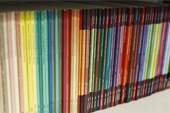
Corruption, grabbing and development
Cheltenham (UK), Edward Elgar, 2014
Ce site appartient à l'Institut International de Planification de l'Éducation de l'UNESCO
1-10 of 23 results

Cheltenham (UK), Edward Elgar, 2014

Berlin, Transparency International, 2010

Bergen, Chr. Michelsen Institute, 2009

Berlin, Transparency International, 2008

Washington, D.C., The International Budget Project, 2008

Washington, D.C., The International Budget Project, 2008

Bergen, Chr. Michelsen Institute, 2008
Restez informés
Inscrivez-vous au buletin ETICO pour recevoir les dernières actualités
Soumettez votre contribution
Apportez votre contribution à la bibliothèque dédiée à la corruption dans l'éducation